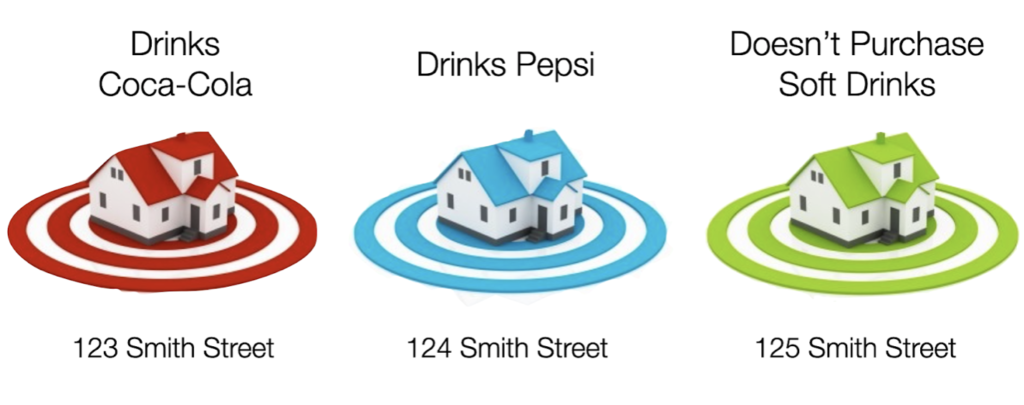Are you looking for a definition of one-to-one marketing? If so, you’re not alone. Marketers, C-Suite executives, and business owners keep hearing about one-to-one marketing and want to know what it’s all about.
One-to-one marketing, as defined in the book An Audience of One by Jamie Turner and Chuck Moxley, is a way for marketers to grow their revenues by narrowing their focus.
A one-to-one campaign engages prospects and customers by using hyper-targeted, personalized advertisements. Instead of a traditional mass marketing campaign where the same message is blasted out to a generic target audience, a one-to-one campaign uses data to help the marketer understand the prospect’s previous purchases, the way they behave, what their interests are, where they go, how they think, and how they prefer to receive communications from different brands.
It’s the opposite of a traditional, mass-marketing approach where advertisers broadcast the same message to as many people as possible. Instead, a one-to-one campaign uses data to provide a nuanced understanding of the potential buyer so that they can be treated as a person rather than a prospect.
What makes one-to-one different?
While the ability to hyper-target and personalize certain kinds of digital campaigns has been available for many years, one-to-one marketing is different because most of those campaigns existed in silos. In other words, the typical online display (i.e., banner ad) campaign existed in its own universe and didn’t share data with the email campaign, let alone the TV, paid social, direct mail, and other campaigns.
What makes today’s one-to-one marketing so revolutionary is that for the first time in history, those campaigns don’t exist in separate silos—instead, the one-to-one campaign connects the dots across all channels. In other words, the data and information from each channel is “talking” to one another, so your campaigns can continuously become more relevant and meaningful to the prospect.
And it gets even better: because all of the data is interconnected, in many cases you can track whether or not the individual seeing the ad actually completed the purchase at the bricks-and-mortar retailer—not just online, but at the physical retail location.
As an example, say you’re the marketing director for Nike, Apple, or a small chain of restaurants. You can now watch to see if the specific group of people who saw your TV commercial actually visited your store and bought your product or service. That information is then looped around to continue to adapt and improve the results of your next series of ads.
Importantly, this is all done by using non-personally identifiable data. As a result, the brand doesn’t know that it’s talking to Davis Tucker in Austin, Texas. Instead, it just knows that prospect number 157-8976-a37-42 has received an ad.
An Audience of One answers questions about one-to-one marketing and provides solutions
An Audience of One is a book about how to use data that has been ethically collected to design marketing campaigns that are then hyper-targeted to consumers in an almost 1-to-1 fashion.
Once a marketer launches their campaign additional data is collected — again, ethically — that connects the dots between the advertisement the individual saw and the final purchase at the store. By hyper-targeting the campaigns, measuring the engagement the consumer has with the ads, and then tracking whether or not they purchased the product on the back-end, we’re able to do a better job calculating the return-on-investment (ROI), or, more accurately, the return-on-marketing-investment (ROMI).
Let’s take a look at each of the steps involved in setting-up, launching, and managing a precision marketing campaign.
Step I:
The first step is to create a profile of the consumer segment you would like to target. Once you’ve identified that segment (e.g., women, ages 25-to-34, who are interested in fitness and have a propensity to purchase running shoes online), you can collect data about that segment by taking the following steps:

It’s important to note that very few organizations would collect all of the data available to them — that would be a very expensive proposition. Instead, they collect the most cost-efficient data and then start building a profile based on what they’ve collected.
Step II:
Once the data is collected and turned into a non-personally-identifiable data segment, it can be used to create a hyper-targeted marketing campaign. This campaign can be delivered to people across multiple platforms so that the ad is seen on their mobile phone, their tablet, their laptop, and their TV screen. In other words, we can send an ad to someone on their mobile as they’re pulling into Starbucks in the morning, then send that person a similar ad on their tablet while they’re at a cafe at lunch, and then send them an ad on their TV while they’re watching a sitcom that evening.

It gets even more interesting. We can also use the data we’ve collected about our target segment to customize the ads that they receive based on their previous purchase behaviors.
For example, let’s say you’re The Coca-Cola Company and you want to send an ad to people living on Smith Street. Because of the kind of data that’s available to us, we can find out what many of the people on Smith Street purchase when they shop for groceries. In other words, we can collect data from grocery stores, convenience stores, and other sources to find out what people on Smith Street are buying and then create ads for them for them based on their previous purchases.
Once we’ve collected their purchase data, we see that certain households have different brand preferences.

If we’re The Coca-Cola Company, what kind of ads would we send to the person living on 123 Smith Street? Of course, we’d send an ad that promotes the brand and thanks them for being a loyal customer.
But what about the person on 124 Smith Street? What kind of ad would The Coca-Cola Company send to the Pepsi drinker? It would not be an ad thanking them for being a Coca-Cola drinker. Instead, it would be an ad designed to get the Pepsi drinker to switch to Coca-Cola. In other words, it would be a coupon offering a discount for a case of Coca-Cola.
And what about the people living at 125 Smith Street? In the old days, that person would see, read, or listen to the same ad that their neighbors saw. But not with precision marketing — today, The Coca-Cola Company can save 33% of it’s marketing budget by skipping over the person at 125 Smith Street and not marketing to them. They wouldn’t see a mobile ad, a laptop ad, a TV ad or any other ad that is part of this campaign.
Step III:
Once the data profiles have been created in Step I, and then the hyper-targeted ads are delivered in Step II, the final step is to measure whether or not the ads worked. In years past, the only way to measure whether or not the ad worked was to track a sales lift in the region where the campaign ran. The problem with that was that there could be a number of variables that influenced sales — The Coca-Cola Company might have had a competition for their sales team; or the grocery store could have run a sales promotion of their own; or the ads the agency ran might have actually worked (stranger things have happened).
But with a properly executed precision marketing campaign, we’re able to hyper-target the ads and then track whether or not those individuals actually bought the product at the grocery store level. In other words, we can connect all of the dots from the very beginning to the very end.
As you might imagine, the implications of this are significant. Instead of blindly running an ad campaign and hoping for the best, we’re able to track the sales on a campaign-by-campaign basis. The result is that we can calculate a specific return-on-investment and then optimize the campaigns as we move forward.
Pretty cool, right?
A note about costs
It’s worth mentioning that the more you hyper-target a campaign, the more expensive it can get. If those expenses get out-of-hand, then the ROI of a one-to-one marketing campaign can be negative. In that case, it might be easier to run a traditional broadcast campaign and to accept the fact that you’ll have some waste.
Generally speaking, the more expensive a product is, the easier it is to do an effective precision marketing campaign because you have a little more flexibility with your profit margins. So, brands like Toyota or IBM or Whirlpool might be the best candidates for a precision marketing campaign. As time goes on and the cost of running a precision marketing campaign decreases, less expensive products like soup, soft drinks, or toothpaste will do more and more precision marketing campaigns and will use the technology as a competitive advantage.
Where do we go from here?
The scenario we just discussed is the tip of the iceberg. We have so much data at our fingertips that we’re just starting to understand how to leverage it properly and ethically. Your Smart TV is collecting data, your smart speaker is collecting data, your car is collecting data, your laptop is collecting data, your favorite retailer is collecting data — it seems as though everyone is collecting data. And that data, when used ethically and properly, can be a benefit to the consumer and to the marketer.
Of course, you can opt-out of these data collection services, so there’s always that. But assuming you don’t opt-out, and assuming the data continues to be collected properly, then it can be used by marketers to send personalized, relevant, engaging ads that can provide you a better experience at a (sometimes) lower cost. And what’s not to love about that?
About the Authors:
Jamie Turner is an internationally recognized author, university professor, and professional speaker, who has consulted and worked with brands such as IBM, The Coca-Cola Company, Holiday Inn, Microsoft, and others. He regularly appears in major media outlets such as CNBC, Business Insider, Forbes, CNN, HLN, and Inc. CareerAddict has recognized Jamie as one of the world’s best speakers and his YouTube channel was ranked among the “Top 10 Business YouTube Channels” in the nation by Wishpond.com.
Chuck Moxley has cofounded three Bay Area technology companies during the course of his career and has developed innovative marketing campaigns for brands such as Chick-fil-A, Lee Jeans, AT&T, Pepsi, Citgo, NFL, and Sears. He is one of the nation’s leading experts on the convergence of technology and marketing, and he speaks frequently at corporations and industry trade organizations on the ethical use of data and its impact on business and society.
Photo courtesy of Brooke Lark: https://unsplash.com/photos/W1B2LpQOBxA
